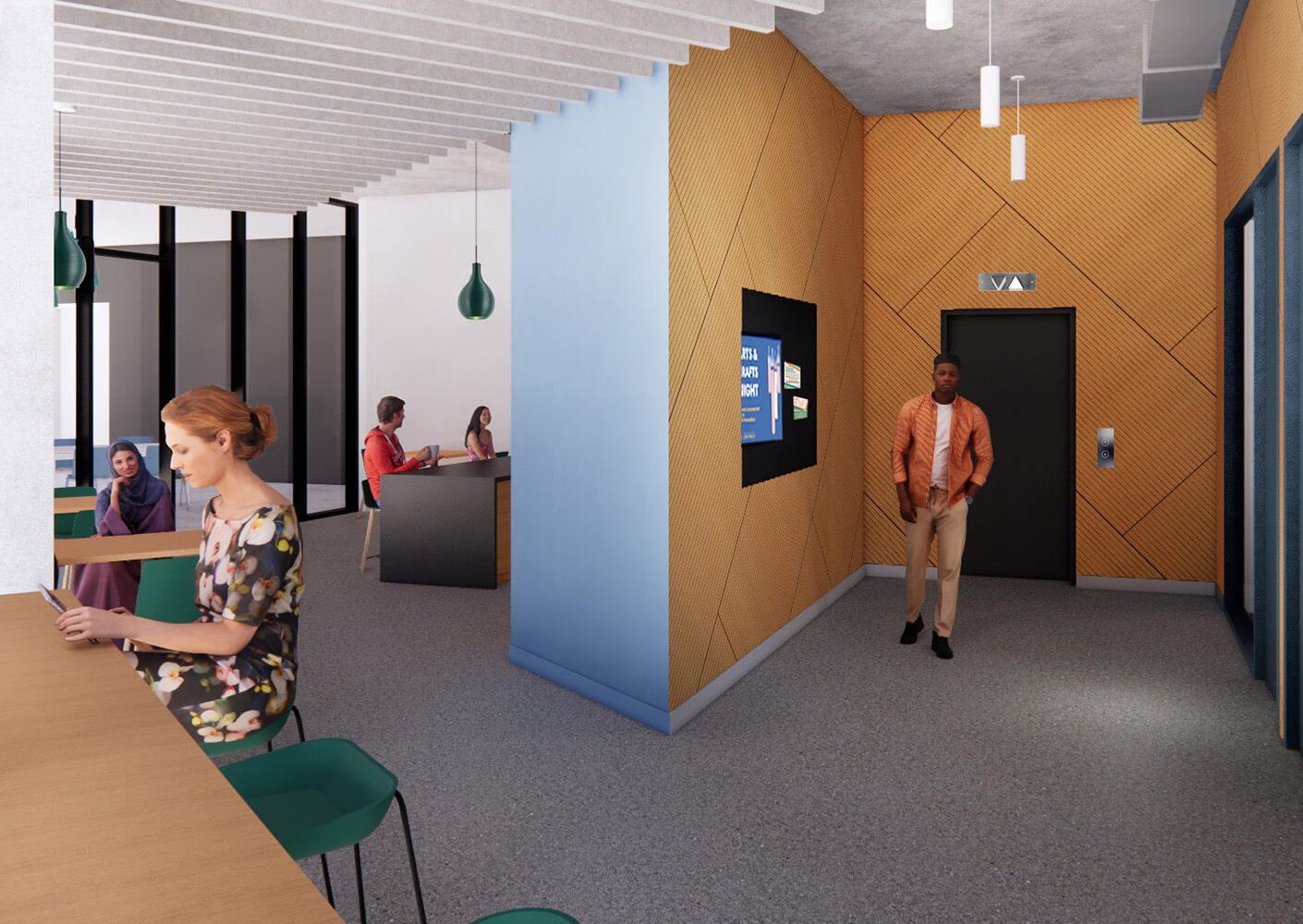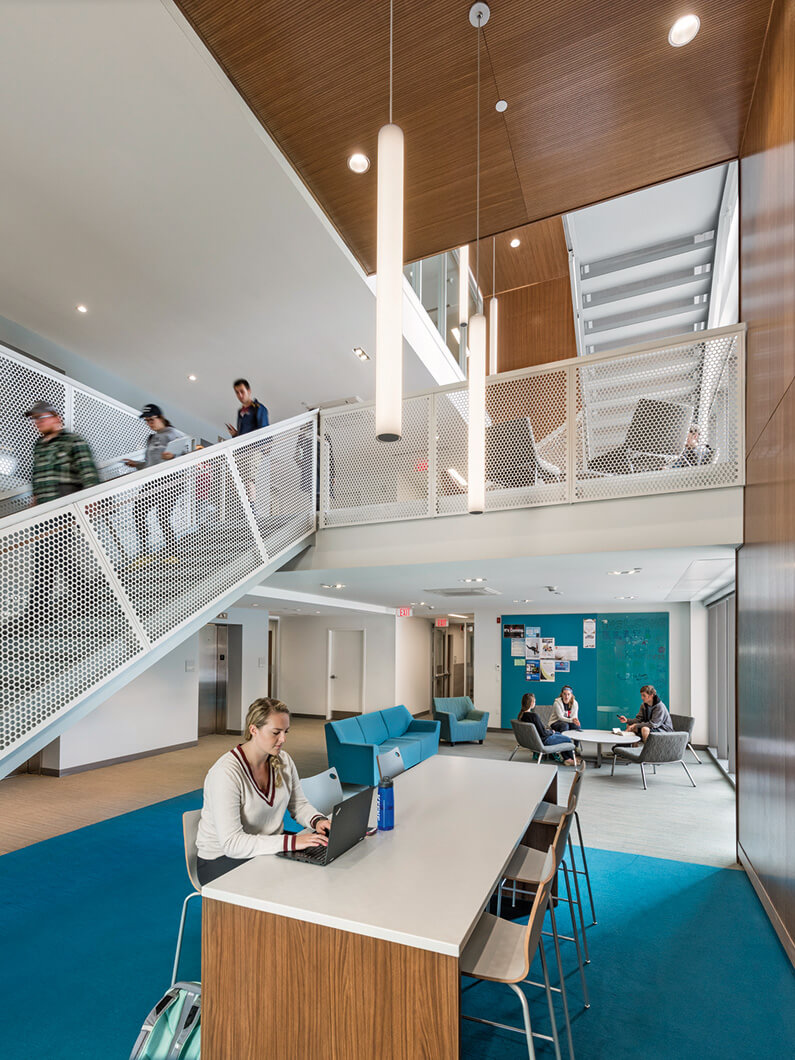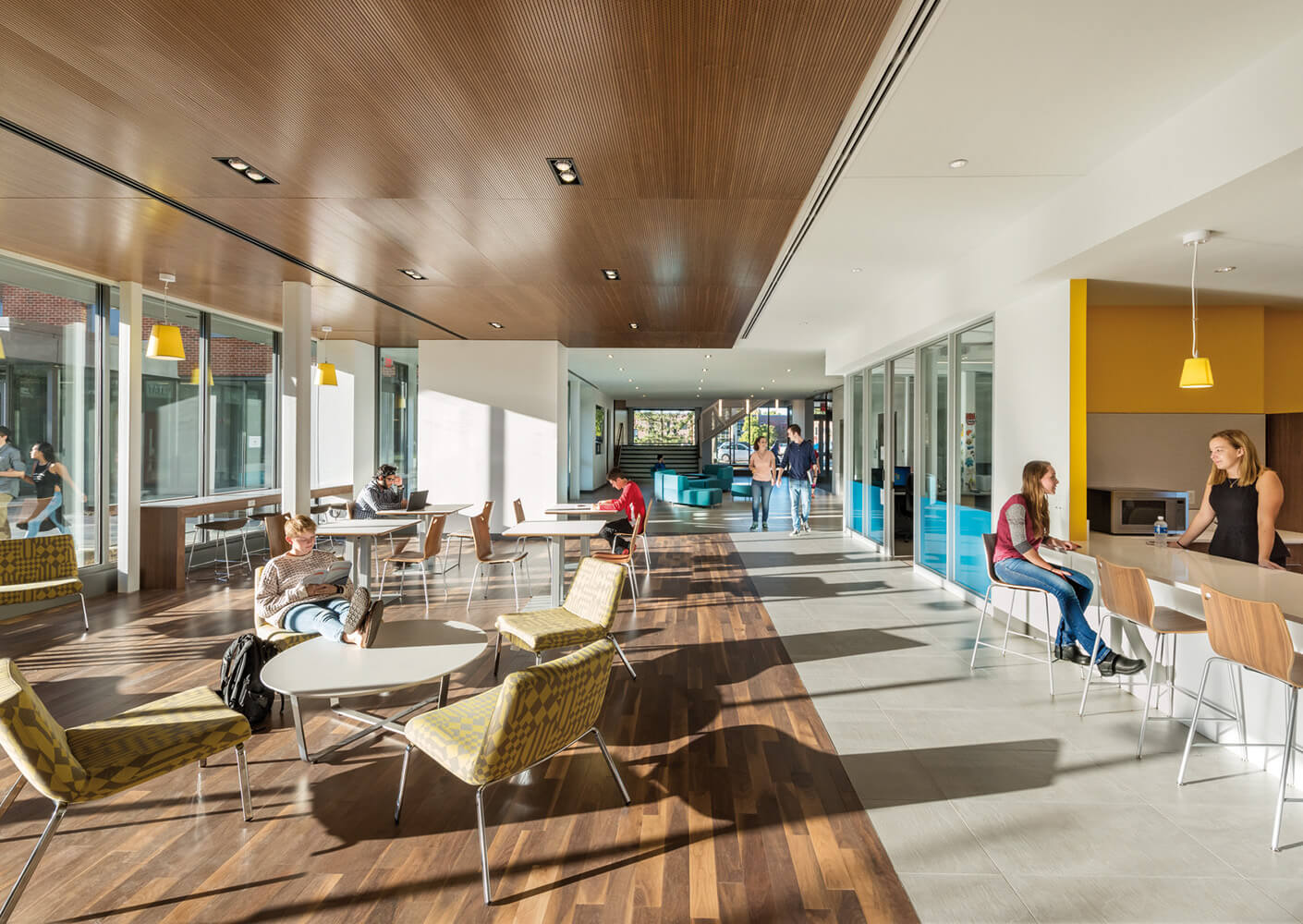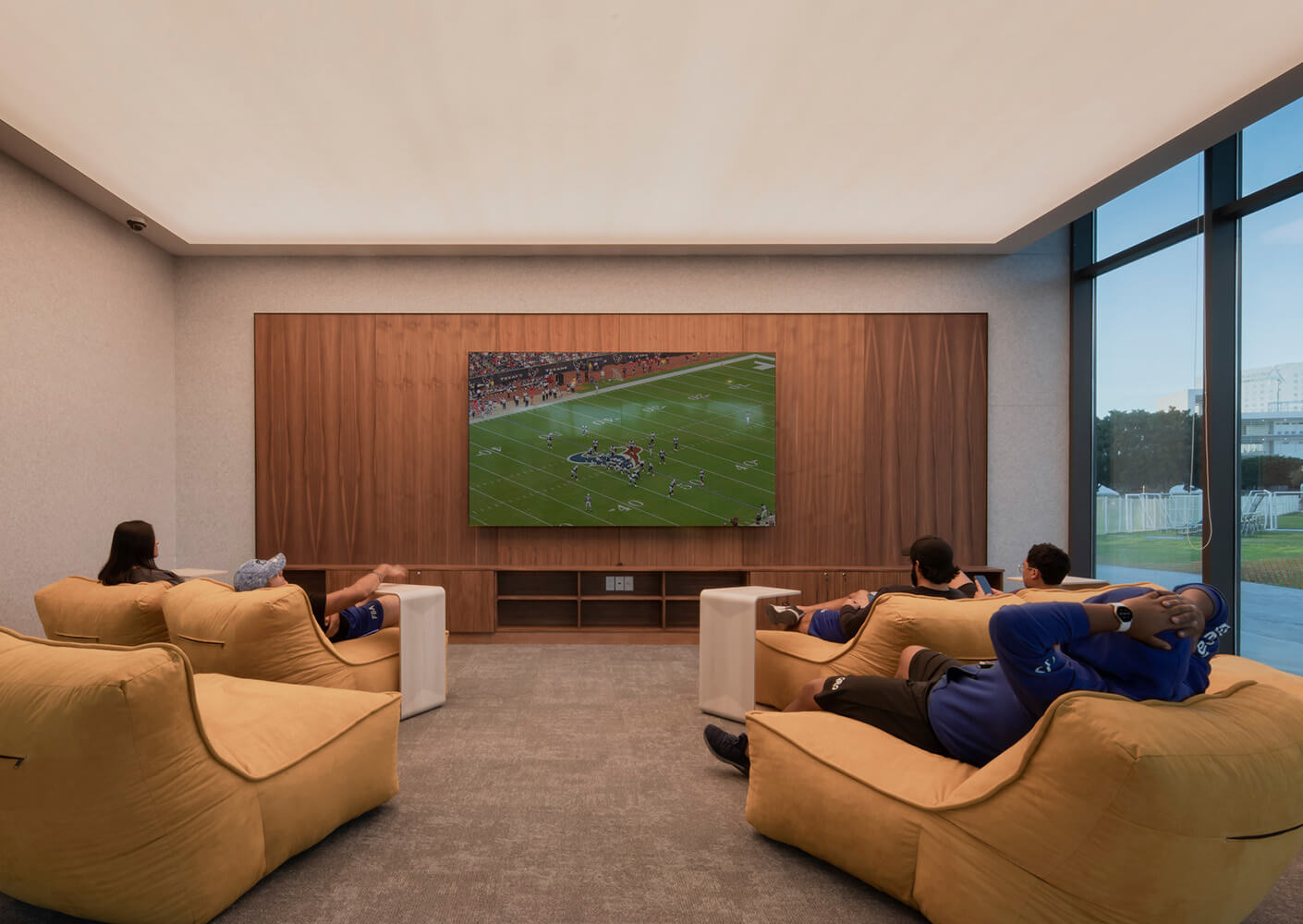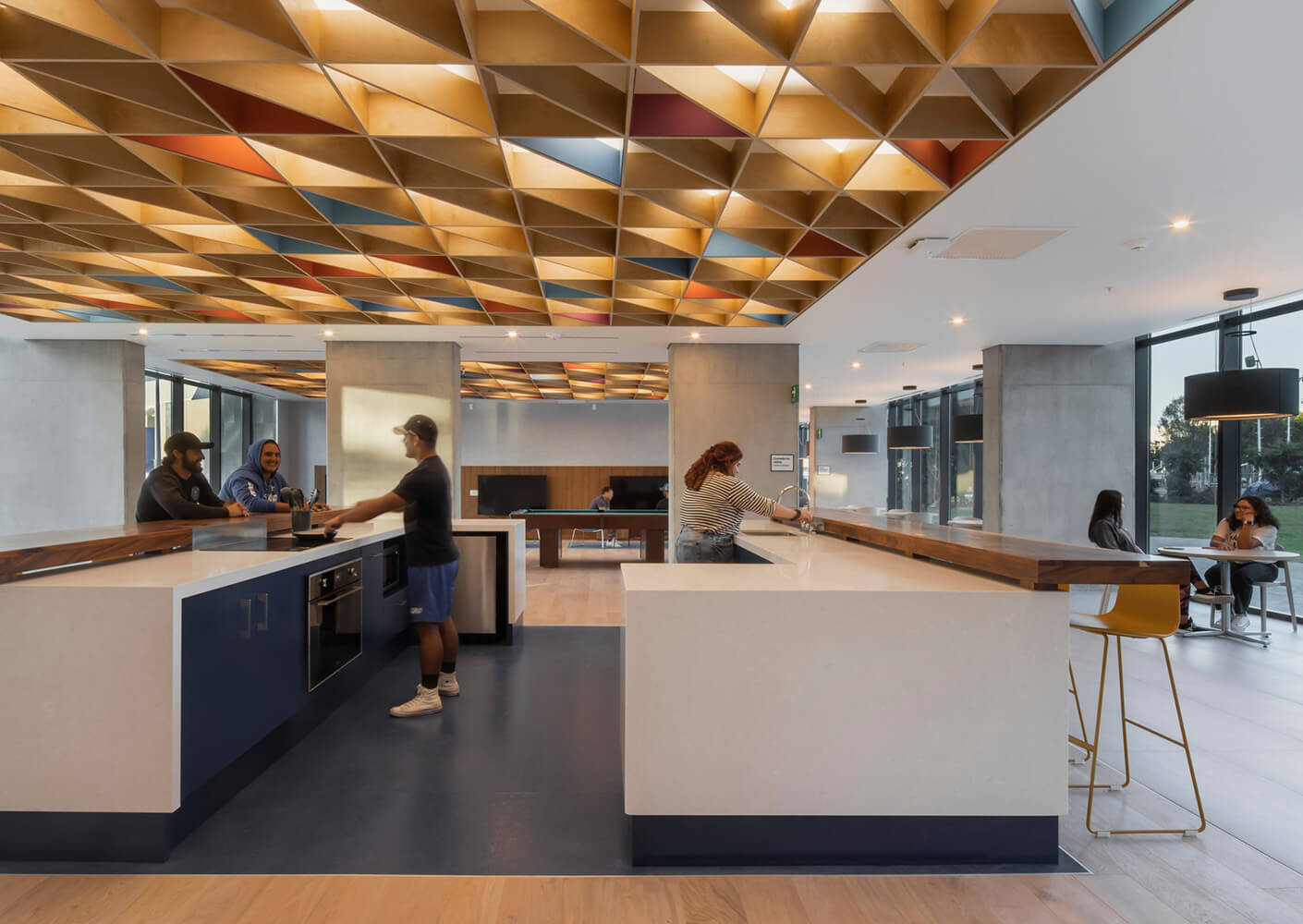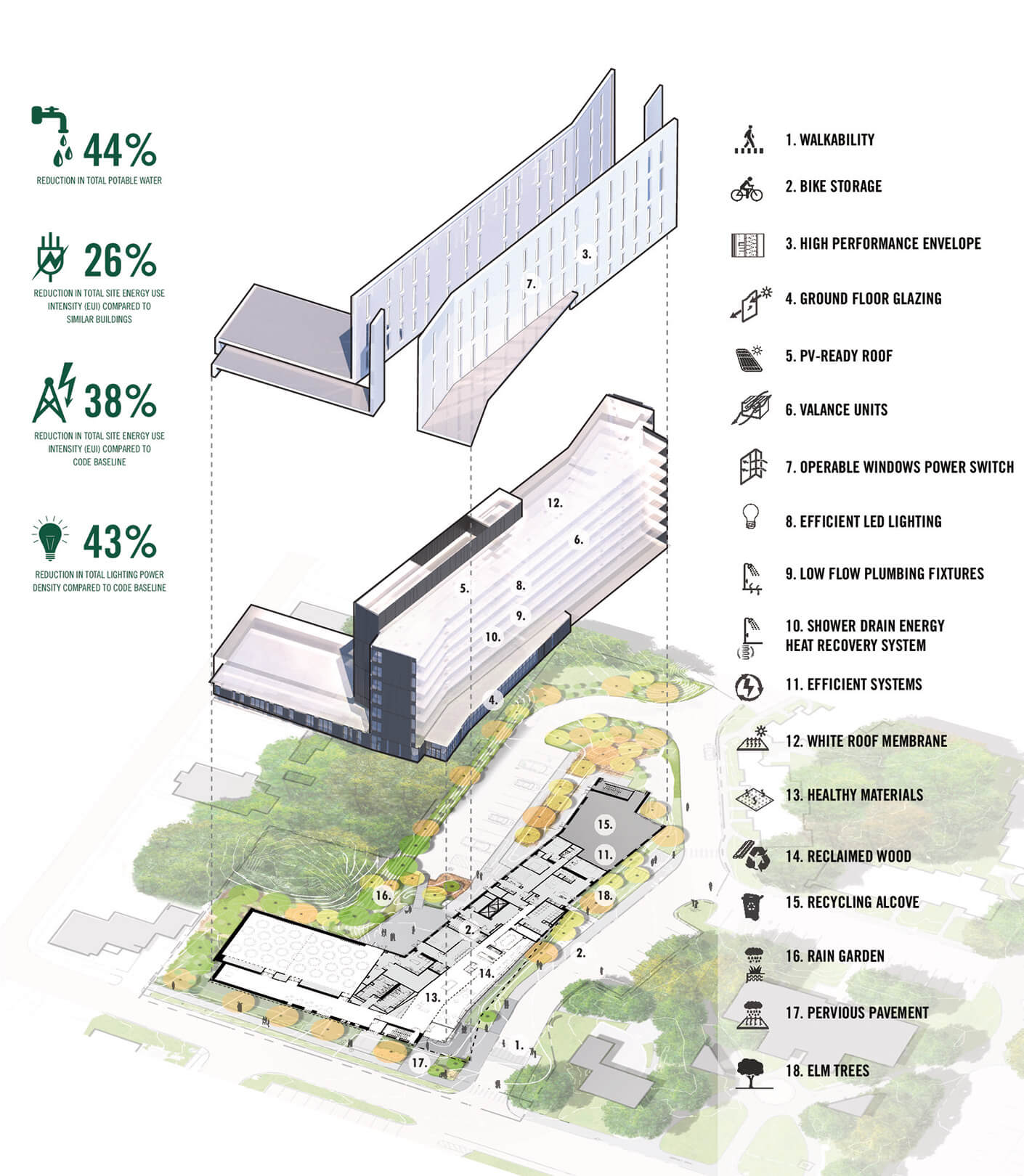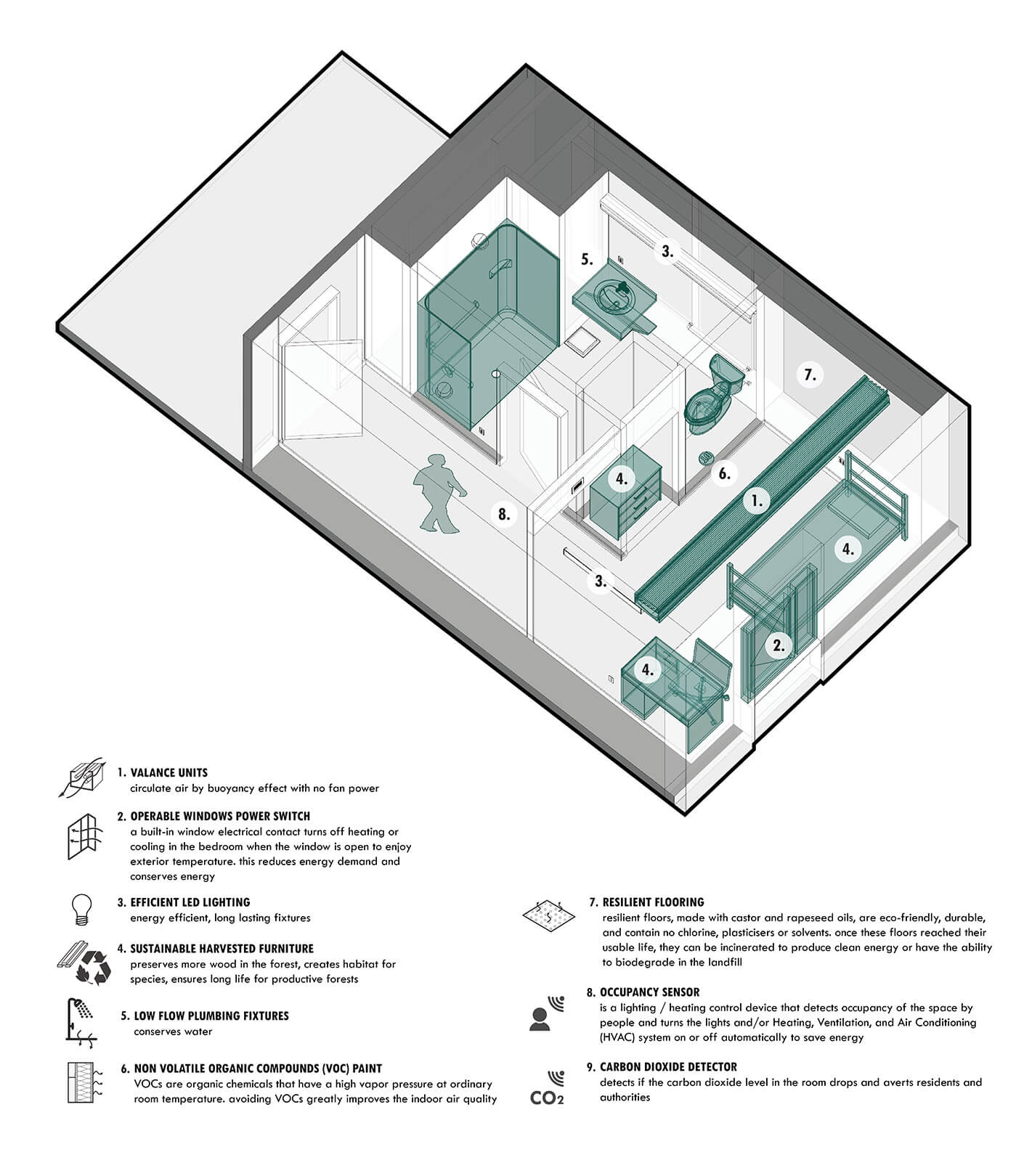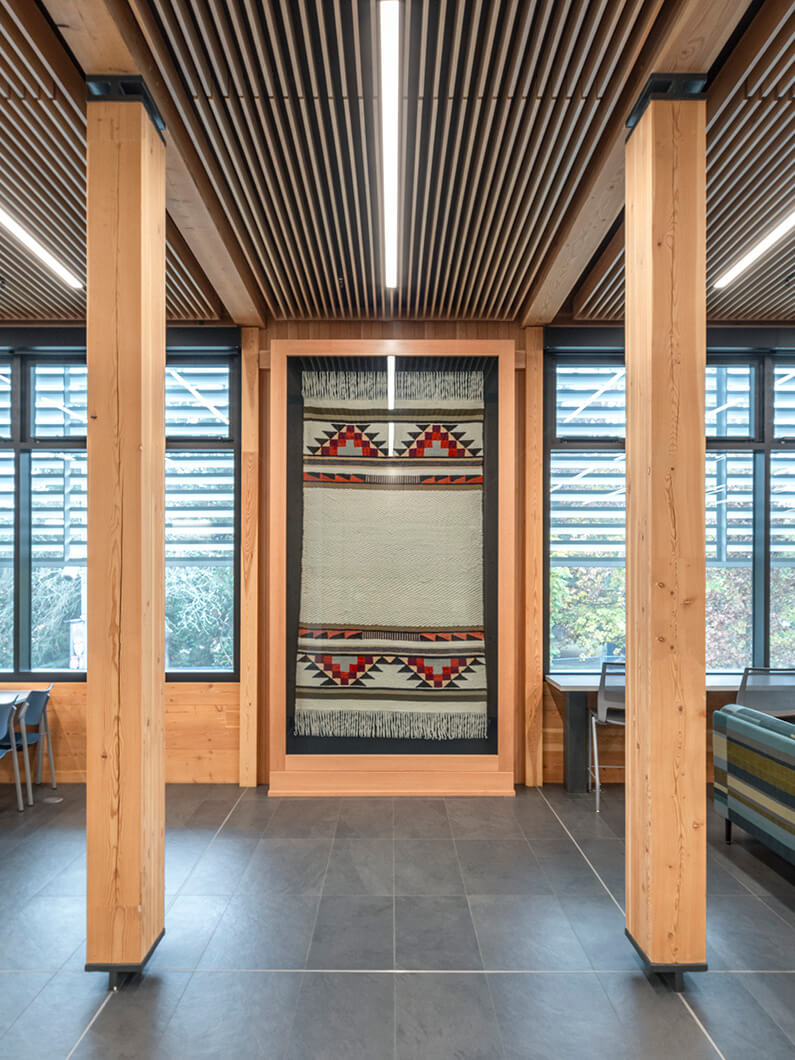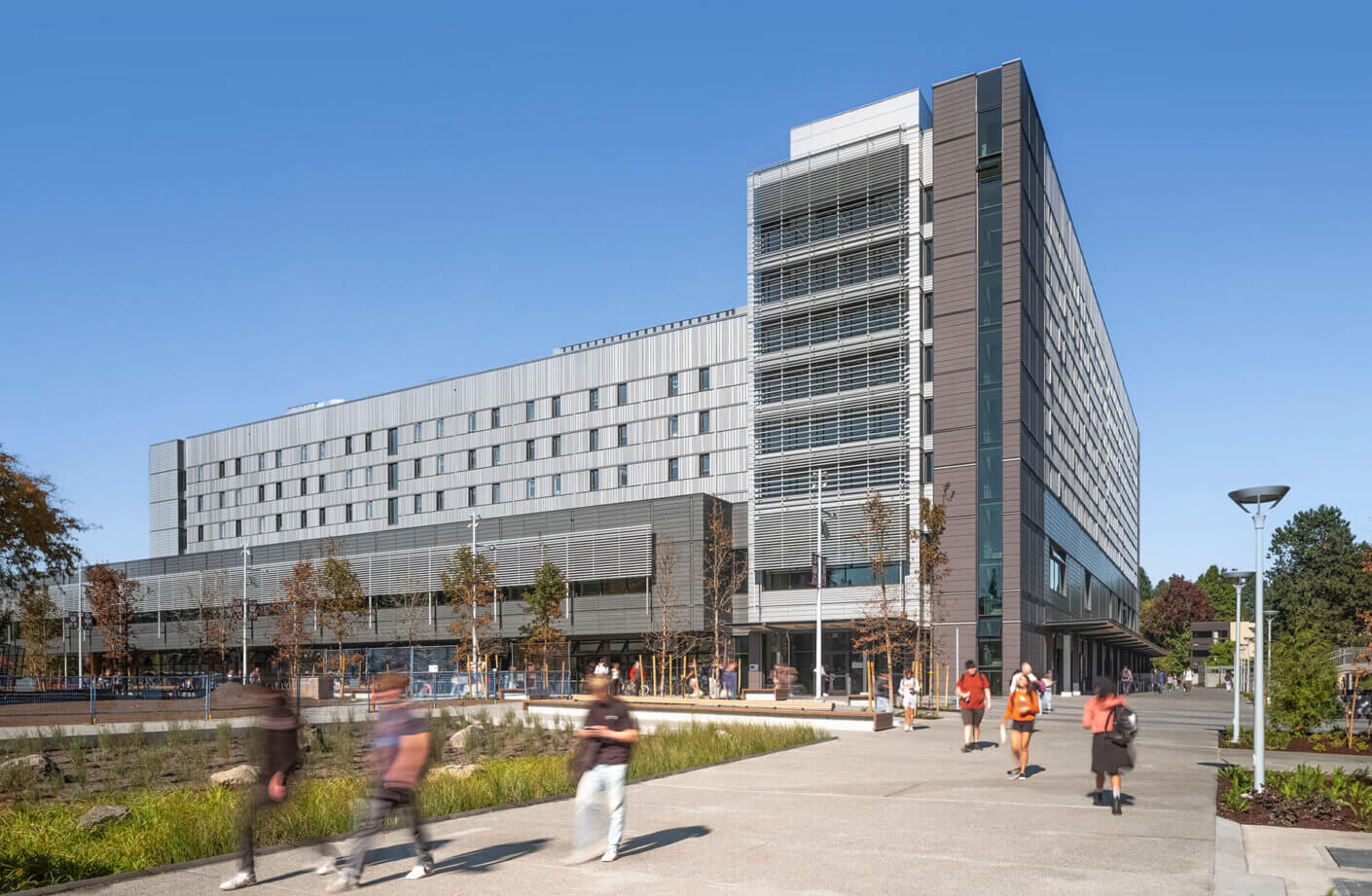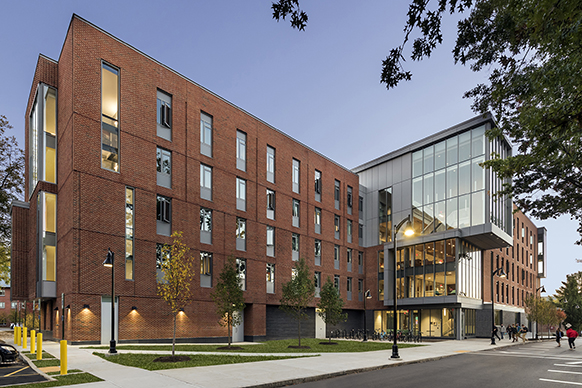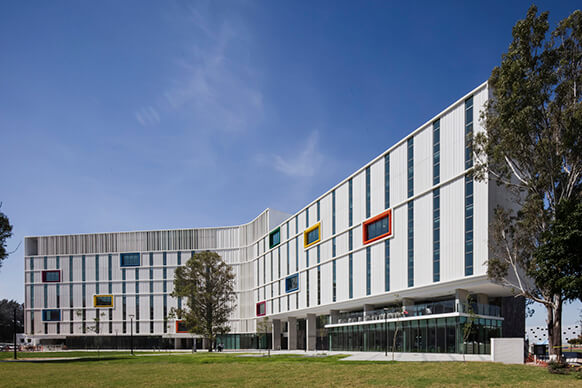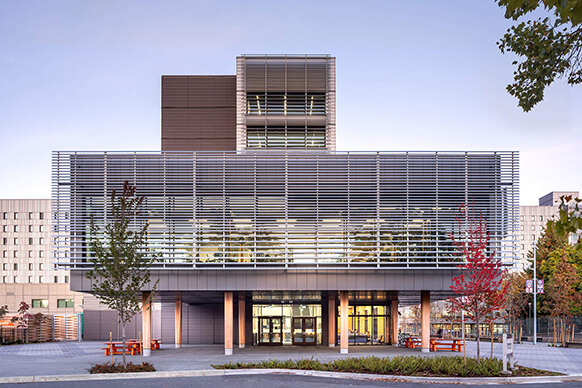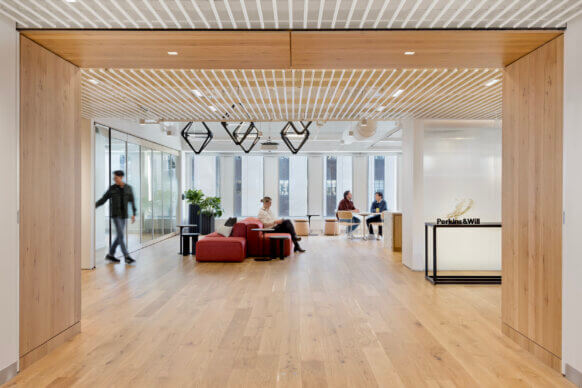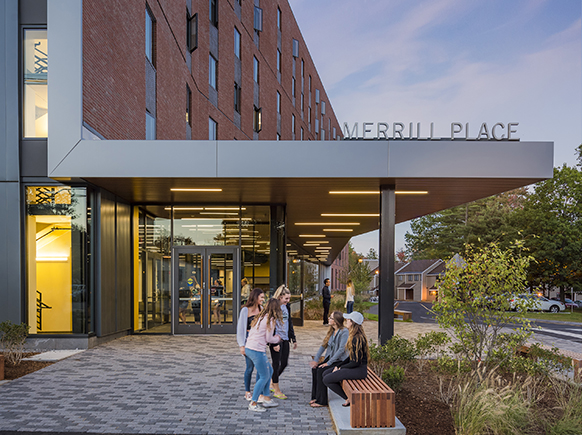First impressions matter; for colleges and universities, the intentional design and choreography of the first-year experience is fundamental to long-term student success and retention.
Studies suggest that students’ residential experience has an outsized impact on their college experience, especially in their first year on campus. Likewise, the happier students are living on campus, the more they give back to the greater academic ecosystem, remaining enrolled and engaged, and establishing long-term connections and community with their peers.
This positive correlation encourages investment in first-year residential life spaces and presents opportunities to reimagine the first-year experience with a spatial infrastructure that supports student growth and development. Through intentional space planning and design, higher education institutions can curate an environment of empowerment, collaboration, learning, respite, and retreat.
